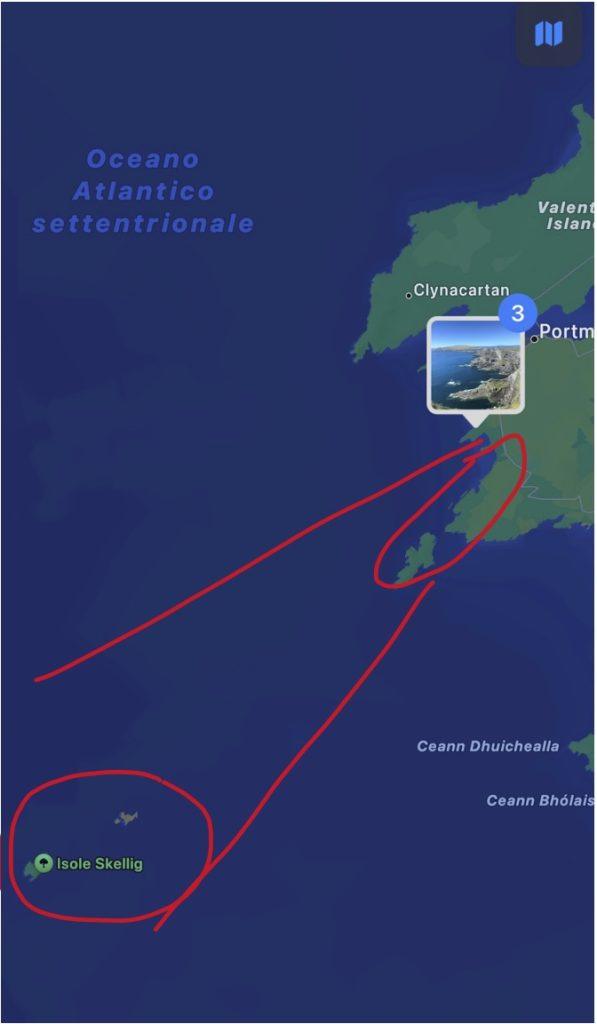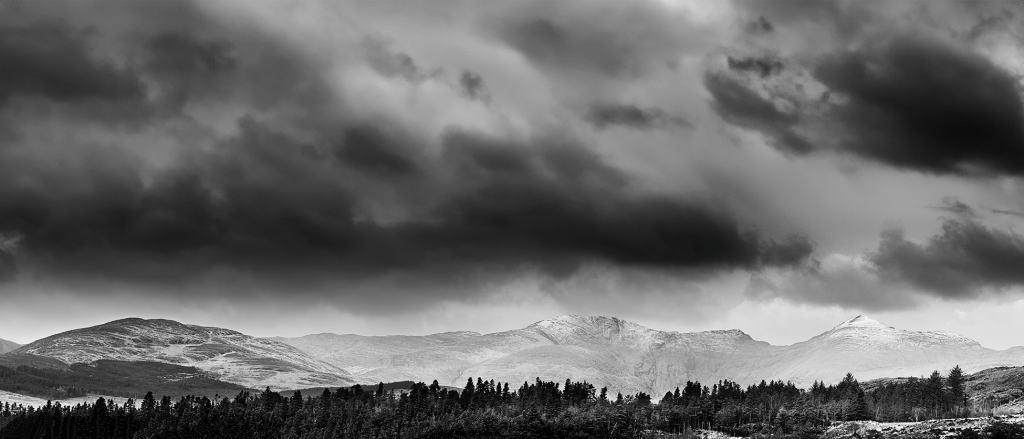Walking to photograph, photographing to walk
In the Éire i Dubh Agus Bán project, the journey was not just a means to reach the places to photograph.
It became a way of working in itself, a creative ritual.
Every path, every detour, every moment spent walking contributed to building my relationship with the landscape.
Unlike a studio job, where the environment is controlled, here I had to immerse myself in the places.
It was not just about finding the right point from which to shoot, but about entering into a dialogue with the geography, letting myself be guided by it.
“I only shot after having walked enough to feel part of what I was looking at.”
⸻
Between maps, research and pure instinct
Before leaving, I carefully studied the areas that interested me:
• Sheep’s Head, with its sense of isolation and the strength of the sea.
• Beara Peninsula, more rugged and fragmented, a territory that seems to resist time.
• Ladies View and the landscapes around Killarney, where the light dances between lakes and mountains.
• The Skellig Islands, almost unreachable, that seem to belong to another world.

Skellig Islands – Distance from the shooting point and the subject part of the composition
I had maps, satellite images, even weather apps to monitor the light.
But then, once there, I let instinct guide me.
Some of my best shots were born by chance, while I got lost on a side road or decided to deviate from a marked path.

Distance from the shooting point to the photographed mountain range

⸻
Scouting: observe before shooting
During scouting sessions I didn’t carry all the equipment with me.
Only a lightweight camera or a smartphone to mark points of interest.
The real work began with the eyes and the body: walking, observing, stopping, returning later with the right light.
In some cases, I returned to the same location two or three times, to capture it in different conditions.
This built a temporal relationship with the place: no longer a landscape to consume, but a living presence to understand.
⸻
The importance of empty time
There is one thing that travel has taught me more than anything: leave space for empty time.
That time in which you don’t photograph, you don’t plan, you don’t produce anything.
That’s where the invisible part of the work happens:
• Intuition.
• Connection.
• Deep understanding of the landscape.
“In Ireland I learned that to photograph well you must first know how to be. Simply be.”
⸻
Effort as part of the process
Climbing promontories, facing the rain, protecting the equipment in the middle of the mud…
They are not just obstacles, but elements integrated into the work.
They forced me to slow down, to make conscious choices, to give value to every shot.
The landscape is not easy to photograph.
It must be conquered with respect, step by step.